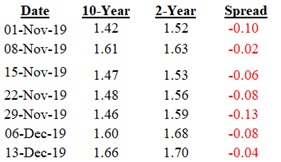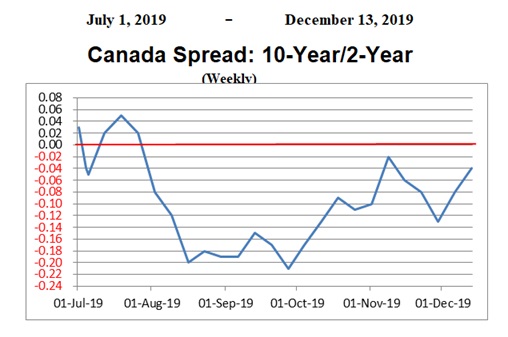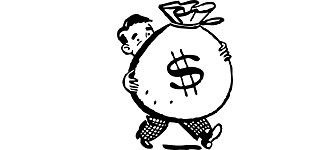10-Year/2-Year Spread Table

The following table shows the interest rates and the accompanying Spreads for the 10-Year and the 2-Year maturities since November 1.
Observations: The Spread narrowed considerably over the last three weeks, with the difference moving from -0.13x to -0.04x.
10-Year/2-Year Spread Chart
The 10-Year/2-Year Spread has been consistently inverted since August 2, as the following chart clearly shows.

Recession Watch
eResearch put Canada on Recession Watch on August 8 when our key interest rate metric, the 10-year/2-year yield curve ratio, stayed inverted for ten consecutive business days.
Historically, economic recessions have occurred some 15 to 20 months after an interest rate Inversion occurs. This means a possible Economic Recession in Canada could occur between November 2020 and April 2021.
Economic Recession Defined
We define an Economic Recession as being characterized by two consecutive quarters of negative GDP growth. This would mean that, to meet the first recessionary date of November 2020, Q2/2020 and Q3/2020 would have to experience negative GDP growth. To meet the April 2021 date, Q4/2020 and Q1/2021 would need to experience negative GDP growth. Between those dates, the other scenario to define a recession is negative GDP growth in Q3/2020 and Q4/2020.
You can read our comprehensive report by clicking the following link: Recession Barometer – Canada – December 15 2019
///





